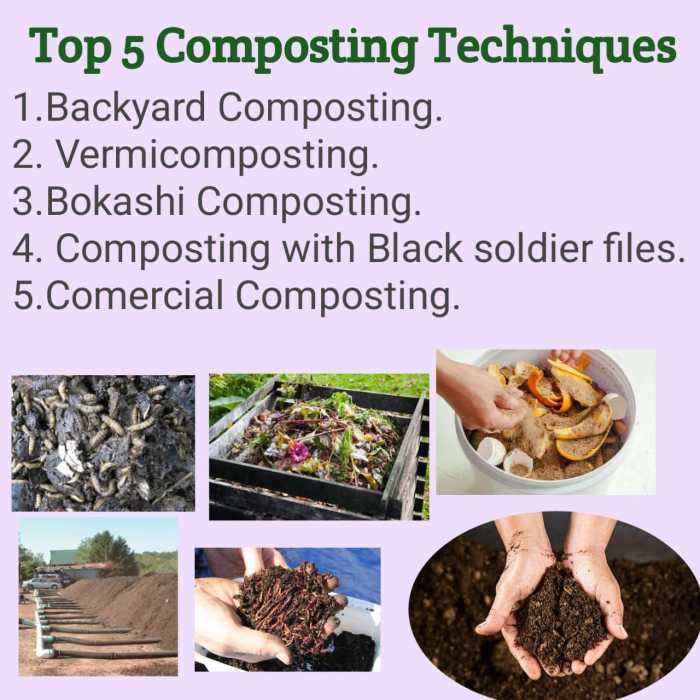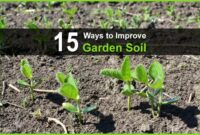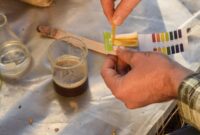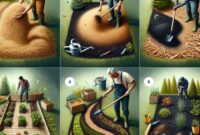Delving into Best composting methods for beginners, this introduction immerses readers in a unique and compelling narrative, with engaging insights on why composting is crucial for both beginners and the environment. We will explore various composting methods, tips on setting up a compost pile, and advice on maintaining it efficiently.
Importance of Composting

Composting is a crucial practice, especially for beginners, as it not only helps in reducing waste but also provides numerous benefits for the environment.
Benefits of Composting for the Environment
- Composting helps in diverting organic waste from landfills, where it would otherwise release harmful greenhouse gases like methane into the atmosphere.
- It enriches the soil with essential nutrients, promoting healthier plant growth and reducing the need for chemical fertilizers.
- Composting aids in retaining moisture in the soil, reducing the need for excessive watering and helping in drought resistance.
- By recycling organic matter back into the soil, composting contributes to the overall health and biodiversity of ecosystems.
How Composting Helps Reduce Waste, Best composting methods for beginners
- Composting reduces the amount of waste sent to landfills, which in turn decreases the environmental impact of waste disposal.
- It helps in creating a circular economy by transforming organic waste into a valuable resource for gardening and agriculture.
- Composting educates individuals about the importance of waste reduction and resource conservation, leading to more sustainable practices in the long run.
Types of composting methods
When it comes to composting, there are several methods that beginners can explore. Each method has its own set of advantages and considerations that need to be taken into account. Let’s delve into the different composting methods suitable for beginners.
When it comes to maximizing space in small areas, one creative solution is to explore vertical garden ideas for small spaces. By utilizing vertical space, you can still enjoy gardening even with limited room. Additionally, if you’re interested in learning how to grow vegetables in containers , you’ll find that it’s a practical and efficient way to cultivate your own produce.
Consider choosing the best plants for container gardening to ensure a successful and thriving garden.
Traditional Composting vs. Vermicomposting
Traditional composting involves the decomposition of organic materials by bacteria, fungi, and other microorganisms. This method requires a mix of green (nitrogen-rich) and brown (carbon-rich) materials, regular turning, and adequate moisture to create nutrient-rich compost. On the other hand, vermicomposting utilizes worms, such as red wigglers, to break down organic matter into compost. This method is ideal for those with limited space and produces compost faster than traditional composting.
When it comes to maximizing space in a small area, vertical garden ideas for small spaces are a popular choice. These creative solutions allow you to enjoy a garden even if you have limited space. Additionally, if you’re interested in growing vegetables in containers , vertical gardens can be a great option. They provide a unique way to grow a variety of vegetables in a small space, making it easy to enjoy fresh produce at home.
Consider planting some of the best plants for container gardening in your vertical garden for a successful and beautiful harvest.
Pros and Cons of Aerobic Composting vs. Anaerobic Composting
- Aerobic Composting: This method involves the breakdown of organic matter in the presence of oxygen. It is a faster process compared to anaerobic composting and produces compost with fewer odors. However, it requires regular turning and monitoring of moisture levels to maintain optimal conditions.
- Anaerobic Composting: In anaerobic composting, organic matter decomposes in the absence of oxygen. While this method may be less labor-intensive than aerobic composting, it produces unpleasant odors and greenhouse gases. It is crucial to use anaerobic composting bins with proper ventilation to prevent anaerobic conditions from developing.
Setting up a compost pile

Starting a compost pile is a great way to reduce waste and create nutrient-rich soil for your garden. Here are the steps to set up a compost pile:
Choosing the ideal location
When setting up a compost pile, it is important to choose the right location. Look for an area that is well-drained and receives partial sunlight. Avoid placing the compost pile directly against a wall or fence, as this can hinder airflow.
- Ensure the location is easily accessible for adding materials and turning the pile.
- Avoid placing the compost pile too close to your house to prevent any unwanted odors.
- Consider placing the compost pile near a water source for easy watering.
Materials needed
To start composting, you will need the following materials:
- Green materials: Includes kitchen scraps, grass clippings, and plant trimmings. These materials provide nitrogen to the compost pile.
- Brown materials: Consists of dry leaves, straw, and shredded paper. Brown materials supply carbon to the compost pile.
- A compost bin or enclosure: While not necessary, a bin or enclosure can help contain the compost pile and speed up the decomposition process.
- A pitchfork or shovel: These tools will be used to turn the compost pile, aerating it and promoting decomposition.
- Water: Keep the compost pile moist, similar to a damp sponge, to facilitate the decomposition process.
Maintaining a compost pile: Best Composting Methods For Beginners

Maintaining a compost pile is crucial to ensure the decomposition process is efficient and odor-free. Turning and aerating the compost pile, addressing common issues, and achieving a balanced composition are key aspects of successful composting.
Turning and Aerating a Compost Pile
Turning and aerating a compost pile help to introduce oxygen, which is essential for the decomposition process. This can be done by using a pitchfork or shovel to mix the materials thoroughly. Turning the compost pile regularly, at least once a week, will prevent it from becoming compacted and allow the microbes to break down the organic matter effectively.
Common Issues for Beginners
– One common issue beginners may face is a smelly compost pile, which is usually caused by anaerobic conditions. To prevent this, ensure proper aeration by turning the pile regularly.
– Another issue is a slow decomposition process, which may be due to the lack of nitrogen-rich materials. Add more green materials like fruit scraps or grass clippings to speed up the decomposition.
Tips for Odor-Free and Balanced Compost Pile
– Maintain a proper balance of green (nitrogen-rich) and brown (carbon-rich) materials in the compost pile. Aim for a ratio of 2:1 brown to green materials.
– Avoid adding meat, dairy, or oily foods to the compost pile, as these can attract pests and cause odors. Stick to plant-based materials for a healthy compost pile.
– Cover the compost pile with a layer of dried leaves or cardboard to help regulate moisture and prevent odors. This will also discourage pests from entering the pile.
In conclusion, mastering the best composting methods for beginners is not only beneficial for the environment but also a rewarding experience for those looking to reduce waste and create nutrient-rich soil. By following these guidelines, you can embark on your composting journey with confidence and success.




